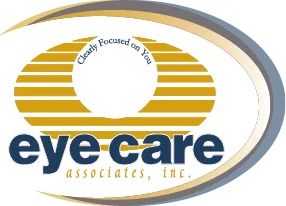LASIK Procedures Available
Eye Care Associates Inc. is proud to offer advanced LASIK services at our locations in Austintown, Youngstown, Howland, Poland, and East Liverpool, OH. LASIK, for laser-assisted in situ keratomileusis, is a safe and effective refractive surgery procedure designed to correct common vision problems and reduce or eliminate the need for glasses or contact lenses. Our experienced LASIK surgeons utilize state-of-the-art technology and personalized treatment plans to help patients achieve clear, crisp vision and enjoy life without the hassle of corrective eyewear.
What is LASIK?
LASIK is a minimally invasive surgical procedure that reshapes the cornea to improve how light is focused on the retina, thereby correcting refractive errors such as nearsightedness (myopia), farsightedness (hyperopia), and astigmatism. The surgeon creates a thin flap in the cornea during the procedure using a femtosecond laser or microkeratome device. The flap is lifted, and an excimer laser is used to reshape the underlying corneal tissue precisely. The flap is then repositioned, allowing for rapid healing and minimal discomfort.
Benefits of LASIK:
- Improved Vision: LASIK can significantly improve visual acuity and reduce or eliminate dependence on glasses or contact lenses, allowing patients to enjoy clear vision for a wide range of activities.
- Quick Procedure: LASIK is a quick outpatient procedure that typically takes less than 15 minutes per eye. Many patients experience immediate improvement in vision and can return to their normal activities shortly after surgery.
- Minimal Discomfort: LASIK is virtually painless, with most patients reporting only mild discomfort or temporary dryness immediately following the procedure. Anesthetic eye drops numb the eyes during surgery, ensuring patient comfort.
- Rapid Recovery: Most patients experience rapid visual recovery after LASIK, with many achieving their final visual outcome within a few days to weeks. Most patients can resume driving and return to work or school within a day or two after surgery.
- Long-lasting Results: LASIK provides long-lasting vision correction, with most patients maintaining clear vision for many years following surgery. While individual results may vary, LASIK offers a permanent solution for refractive errors in most cases.
Personalized LASIK Treatment:
At Eye Care Associates Inc., we understand that every patient is unique, which is why we offer personalized LASIK treatment plans tailored to each individual's specific needs and goals. Our experienced LASIK surgeons conduct thorough evaluations and measurements to determine candidacy for LASIK and ensure the best possible outcome for every patient.
Schedule Your LASIK Consultation Today
If you're tired of relying on glasses or contact lenses to see clearly, LASIK may be the solution you've been looking for. Call us at (330) 746-7691 to schedule a consultation with one of our experienced LASIK surgeons at Eye Care Associates Inc. and take the first step towards achieving clear, crisp vision without needing corrective eyewear. Trust your eyes to the experts dedicated to providing exceptional care and outstanding results with LASIK.
